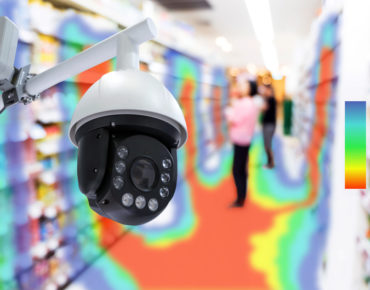Intel Extends Support for IoT Vision Edge Apps

via Shutterstock
In the IoT era unfolding before us, the next frontier is vision applications, applying ML and DL techniques for real-time/near-time analytics of video data from cameras at the edge. It’s a way to monitor reality, with use cases across industrial sectors as far as the eye can see: in manufacturing (finding product defects on assembly lines), retail (inventory oversight, monitoring consumer dwell times and purchasing for optimized floor layout), plant operations (remote detection of equipment maintenance needs) and public safety in cities (traffic monitoring, law enforcement) and airports (surveillance, security).
Intel this week launched its OpenVINO (Open Visual Inference & Neural Network Optimization) toolkit, designed to accelerate development of high-performance computer vision and deep learning inference edge applications, supporting its portfolio of hardware and software vision products. OpenVINO supports several Intel processors – CPUs, CPU-GPUs, VPUs (see below) and FGPA’s – depending on application requirements.
“Intelligence is moving beyond the data center, beyond the cloud, it’s moving out to the edge,” Intel’s Todd Matsler, director, IoT Global Video Team, told EnterpriseTech, adding that Intel’s IoT business grew 20 percent last year, driven in part by vision applications. “We’re seeing this especially in IoT vision systems as more cameras at higher resolution start to get added to the devices in the IoT. This increase in video use poses challenges that drive the need for more compute at the edge.”
Matsler said various price, performance and power factors come to bear on the variety of vision use cases adopted by enterprises, “along with good edge management practices to account for. No one size fits all at the edge.”
OpenVINO supports several software frameworks, such as TensorFlow, MXNet and Caffe, and it has three APIs: Intel’s Deep Learning Deployment toolkit and functions for OpenCV and OpenVX, according to the company.
Matsler said OpenVINO provides “choice with performance and power to accommodate the wide range IoT infrastructures,” enabling developers to write code once “and then deploy to multiple types of Intel-based devices (and processors) and easily customize those models as needed,” he said, distributed from edge to cloud. This includes support for Intel CPUs (Xeon and Atom along with Core chips integrated with AMD GPUs) for access to systems consistent with existing architectures; Intel FPGAs for accelerated throughput to adapt to new networks and applications; and Intel Movidius Vision Processing Unites (VPUs, also combining CPUs and GPUs) for embedding within constrained environments.
Intel said customers include:
G.E. Healthcare, which reported a 14x speed up in application performance without resorting to accelerators. An aspect of the application is using machine learning to automate tagging of medical images for classification at the “point of data capture” for storage and later use in diagnostics workloads.
“With OpenVINO, we are now able to optimize inferencing across Intel silicon, exceeding our throughput goals by almost 6x,” said David Chevalier, principal engineer, GE Healthcare. “We want to not only keep deployment costs down for our customers, but also offer a flexible, high-performance solution for a new era of smarter medical imaging. Our partnership with Intel allows us to bring the power of AI to clinical diagnostic scanning and other healthcare workflows in a cost-effective manner.”
AgentVI, a security and loss prevention vision solutions provider with an analytics and deep learning platform based on the Intel Core i3 chip.
OpenVINO has enabled “us to move from supporting two cameras to 20 with one developer in under three weeks,” said Zvika Ashani, CTO/co-founder of AgentVI. “We will be able to fully scale our solutions to the edge with the right performance per dollar while leveraging Intel Movidius VPU and Intel FPGA solutions.”
Dahua, a security and loss prevention OEM has used OpenVINO to integrate FPGAs and Movidius VPUs and into its surveillance BI platform for smart city traffic monitoring.
“We are using Intel Core i5 Processor along with Intel Arria10 FPGA on our newly designed AI NVR product,” said Jun Yin, director, Advanced Technology Institute, Dahua. “By leveraging Intel’s OpenVINO toolkit, we are able to seamlessly implement our own customized deep learning solutions onto Intel’s various platforms, perfect for applications with low latency requirements. Accelerating our system with Intel FPGAs has enhanced the deep learning capabilities for our real-time vision based solutions enabling a higher performance/watt/dollar. We are also using Intel Movidius Myriad product family for analytics at endpoints, including surveillance and machine vision cameras.”











